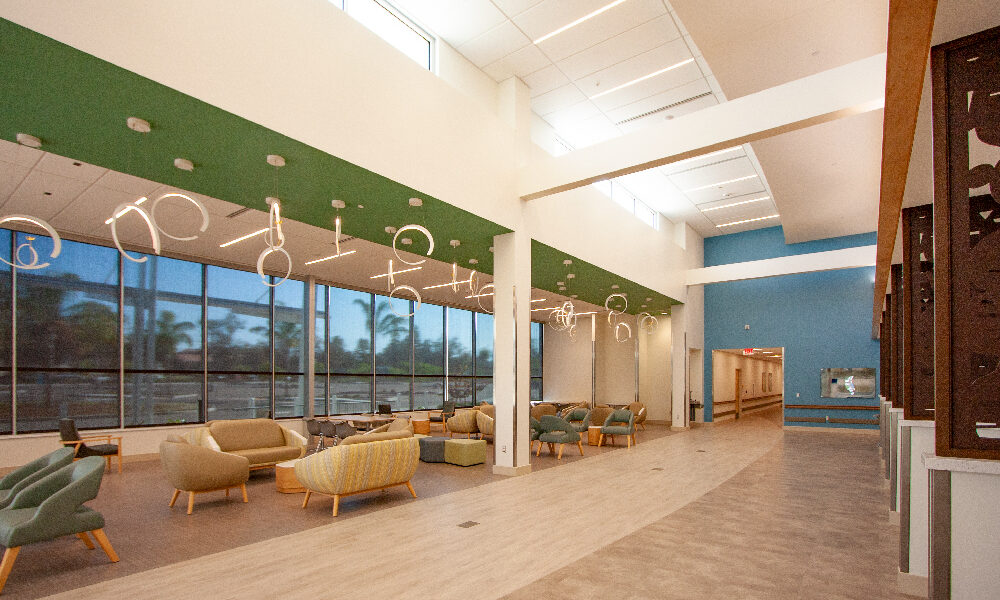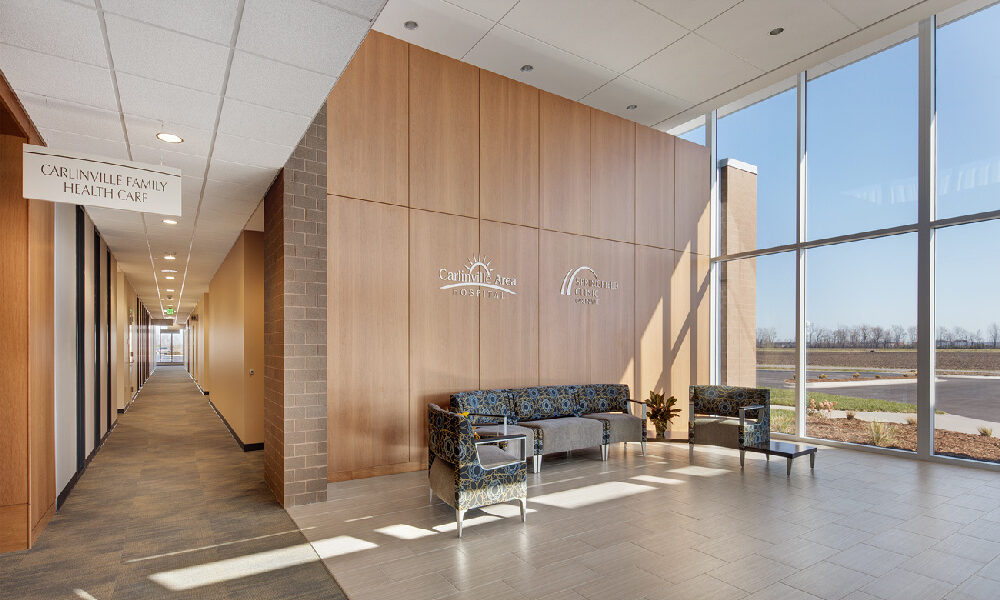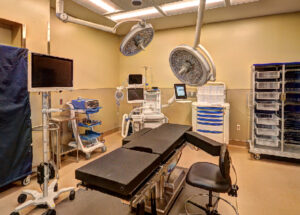 The hybrid model enables the facility manager to make more meaningful decisions because the model creates an ecosystem of partners supporting the overall goal.
The hybrid model enables the facility manager to make more meaningful decisions because the model creates an ecosystem of partners supporting the overall goal.  Although owners are provided options ranging from traditional DB to DBB, CM at risk and IPG, each bring with them a pro and con that challenge the benefits to owners, designers, engineers and contractors.
Although owners are provided options ranging from traditional DB to DBB, CM at risk and IPG, each bring with them a pro and con that challenge the benefits to owners, designers, engineers and contractors.  The question facing project delivery is if the best of all the processes can be harnessed into one hybrid design and construction healthcare delivery model, efficiently and effectively for all parties.
The question facing project delivery is if the best of all the processes can be harnessed into one hybrid design and construction healthcare delivery model, efficiently and effectively for all parties.  Because the hybrid model puts a premium on bringing performance parameters to the table early in the project, the design team can develop solutions around real answers rather than contemplate many possibilities.
Because the hybrid model puts a premium on bringing performance parameters to the table early in the project, the design team can develop solutions around real answers rather than contemplate many possibilities. Subscribe Now
New Hybrid Model Brings Premium Benefit to Healthcare Projects
By Anthony Walker
Leveraging communications, responsibility + expertise
When the word “hybrid” is mentioned, healthcare projects and strategies that involve emergency or operating rooms come to mind. While such facility strategies have dramatically improved the operation of hospitals and healthcare facilities by providing flexibility and efficiencies, the process for bringing these spaces to life has evolved less so. Although owners are offered options that range from traditional Design-Build to Design-Bid-Build, Construction Manager at Risk and Integrated Project Delivery, each bring with them pros and cons that challenge the benefits to owners, designers, engineers and contractors.
At the heart of challenges is a combination of communications, responsibility and expertise. In other words, who is responsible for what — at which stage — and has the time and knowledge to direct activities and changes in an efficient manner?
Like the hybrid OR that combines the best elements of an operating room with imaging to empower surgical teams with the most benefits of minimally invasive procedures — project delivery teams must ask if the best of all processes can be harnessed into one hybrid design and construction healthcare delivery model both efficiently and effectively, for all parties.
A hybrid to harness best expertise
When drawing an organizational chart for most healthcare project teams, more often than not it appears a bit like a pyramid. Depending on the delivery process, the top of the pyramid is occupied by one professional or consultant and, despite the fact that projects are the ideas of the owners, it leaves those owners in the middle — caught in that tension between designers, engineers, contractors and consultants who each believe they represent the owner’s best interests. The challenge for owners in these situations is that it burdens them with minute details that require significant time and a steep learning curve to understand nuanced design, engineering or construction details.
When owners identify a new project need, they bring an expertise in delivering care by knowing their market, their operations and the potential for shifting how they provide care to their patients and families. For designers and engineers, they bring an expertise in standards and advances that elevate that care delivery and improve the care environment for both patients and staff. For contractors and subcontractors, their expertise is in project delivery and materials to help the owner achieve the best cost.
Timing of initial involvement best coincides when these project team members offer the most benefit with the largest impact. Such timing is usually early, and involves empowering these project team members in order to maximize their expertise. More importantly, it reduces redundancies often seen in other delivery models, because it allows each member of the project team the shared responsibility to find the optimum solution. Rather than designing and costing out options that will not be implemented, the project team focuses on designing for the specific project. By leaning on and trusting the proficiency of the project team members, owners and facility managers are freed from the minutia of the details so they can focus on defining performance standards and mapping where the project should go.
The benefit of freedom
The hybrid model for healthcare project design is a departure from what most owners experience in project management. By eliminating that uncomfortable middle seat owners usually occupy, they’re freed to focus on the day-to-day operations of their facility, rather than the details of the design process.
Surprisingly, such freedom can feel awkward for owners and facility managers not accustomed to a more advisory and less managerial role. The question that plays in the back of minds for many in the hybrid model is whether or not the team is finding the most optimum solution at the best price.
The challenge in defining “best deal” has always been an inability to truly know if the deal was best. While competitive bidding elicits varied prices, it’s difficult to understand what deal is best because the system can be gamed. Highlighting the difference between cost and value is keenly insightful here. One deal may have significantly more value even though it comes at a slightly higher cost.
By defining the expectations and pairing those parameters with historic metrics like cost, owners can find comfort knowing there is alignment between the solution and expectations and, more importantly, that the team can be trusted stewards of the owner’s resources.

The hybrid model for healthcare project design is a departure from what most owners experience in project management.
A more efficient process
Because the hybrid model places a premium on bringing performance parameters to the table early in the project, the design team can develop solutions around real answers rather than contemplate many possibilities. For designers, this means they can focus on the design and creative problem-solving.
Project managers are also able to give the team members room to focus on their part of the project, since the owner’s goals can be easily distilled without the need for interpretation. For contractors and tradespeople, there is more upfront participation in the hybrid model, but that participation makes the in-field delivery much smoother, faster and cost-effective.
Together, this is where the process is most efficient. It encourages participation from each member of the team, and challenges them to bring their knowledge and understanding to benefit the day-to-day project operations during the design phase. No longer placed in the middle of a project with no overall view, but with a string of responsibilities, team members are placed front and center, providing perspective and opportunities to make the right decisions at the right time. The collaborative approach allows the design team to develop more detailed bid packages, avoiding any vague solutions that require architects to make field-to-fit decisions, as well as eliminating rework and waste.
Most importantly, the hybrid model removes the heavy lifting of the facility manager to act as an integrator and mediator between the different specialties on the project team. Because the model creates an ecosystem of partners supporting the overall goal, the hybrid model enables the facility manager to make more meaningful decisions.
By taking a holistic view of the process, leaning into the expertise each project team member brings — and trusting in the shared responsibilities those members carry — this innovative hybrid design and healthcare delivery model gives both owners and the project team an opportunity to leverage process efficiencies to deliver performance-oriented solutions, in a cost-effective manner, for the healthcare organization and communities they serve.
Photos courtesy of The Korte Company
Author: Anthony Walker
Anthony Walker is healthcare project executive with the Korte Company and can be reached at anthony.walker@korteco.com.
Tags: Design-build, Integrated Project Delivery, Korte Company
Posted September 13, 2023
More Articles:
- Rethinking Healthcare Design to Address Post-Pandemic Workforce Shortage
- Superheroes Descend on Connecticut Children’s for Groundbreaking of 8-Story Clinical Tower
- DBIA Updates Design-Build Done Right Universal Best Practices
- Banner Gateway Medical Center Tower Expansion Doubles Size of Medical Campus
- CxA Workshop & Exam
Apr 29, 2024 – Apr 30, 2024 - EMP Seminar & Exam at CxEnergy 2024
Apr 29, 2024 – Apr 30, 2024 - CxEnergy
Apr 29, 2024 – May 2, 2024 - PHCC West 2024
Apr 29, 2024 – May 2, 2024 - Lean in Design Forum 2024
May 1, 2024 – May 2, 2024 - IFMA’s Facility Fusion Conference & Expo
May 5, 2024 – May 7, 2024 - ASHE Academy 2024
May 6, 2024 – May 10, 2024










